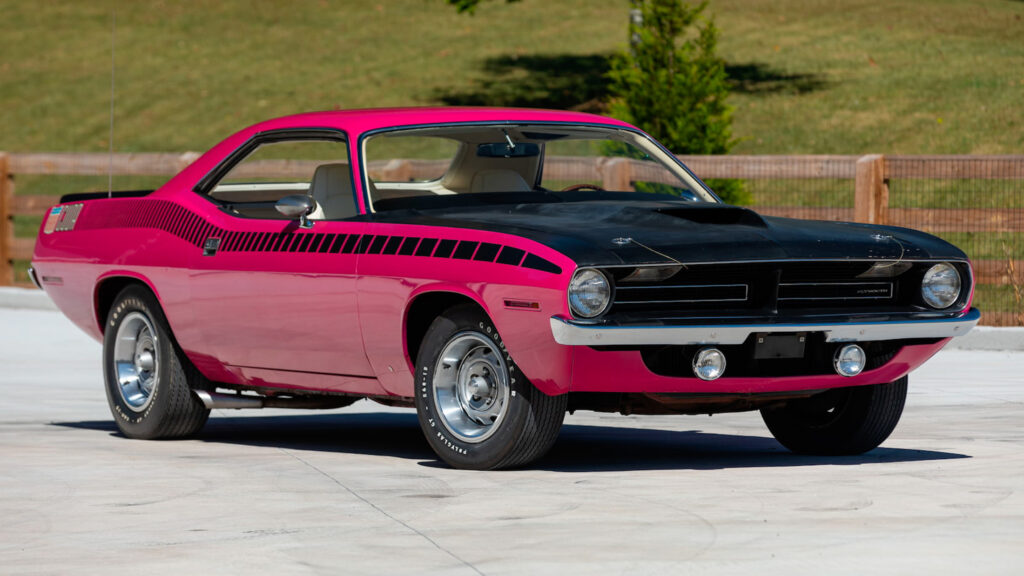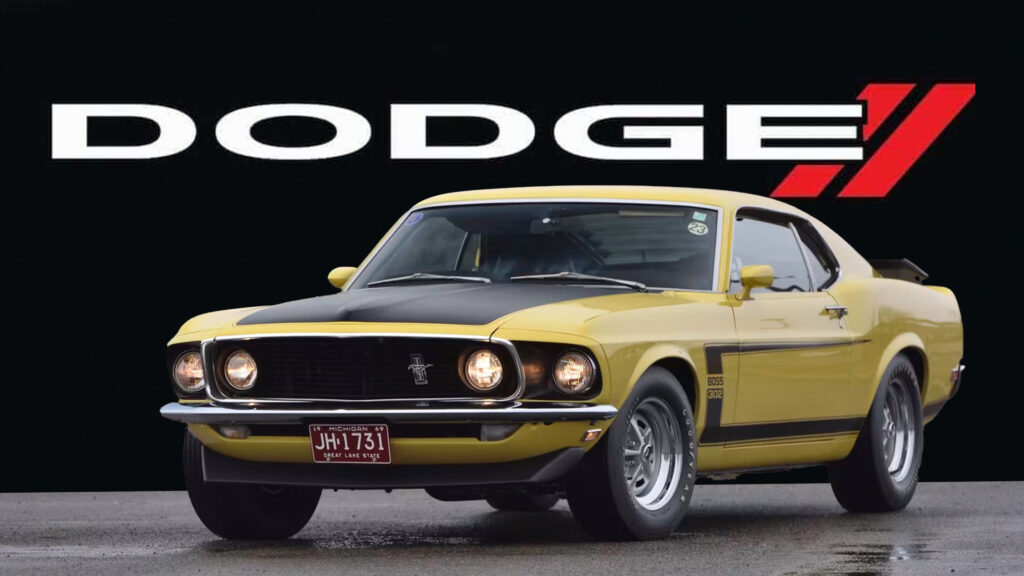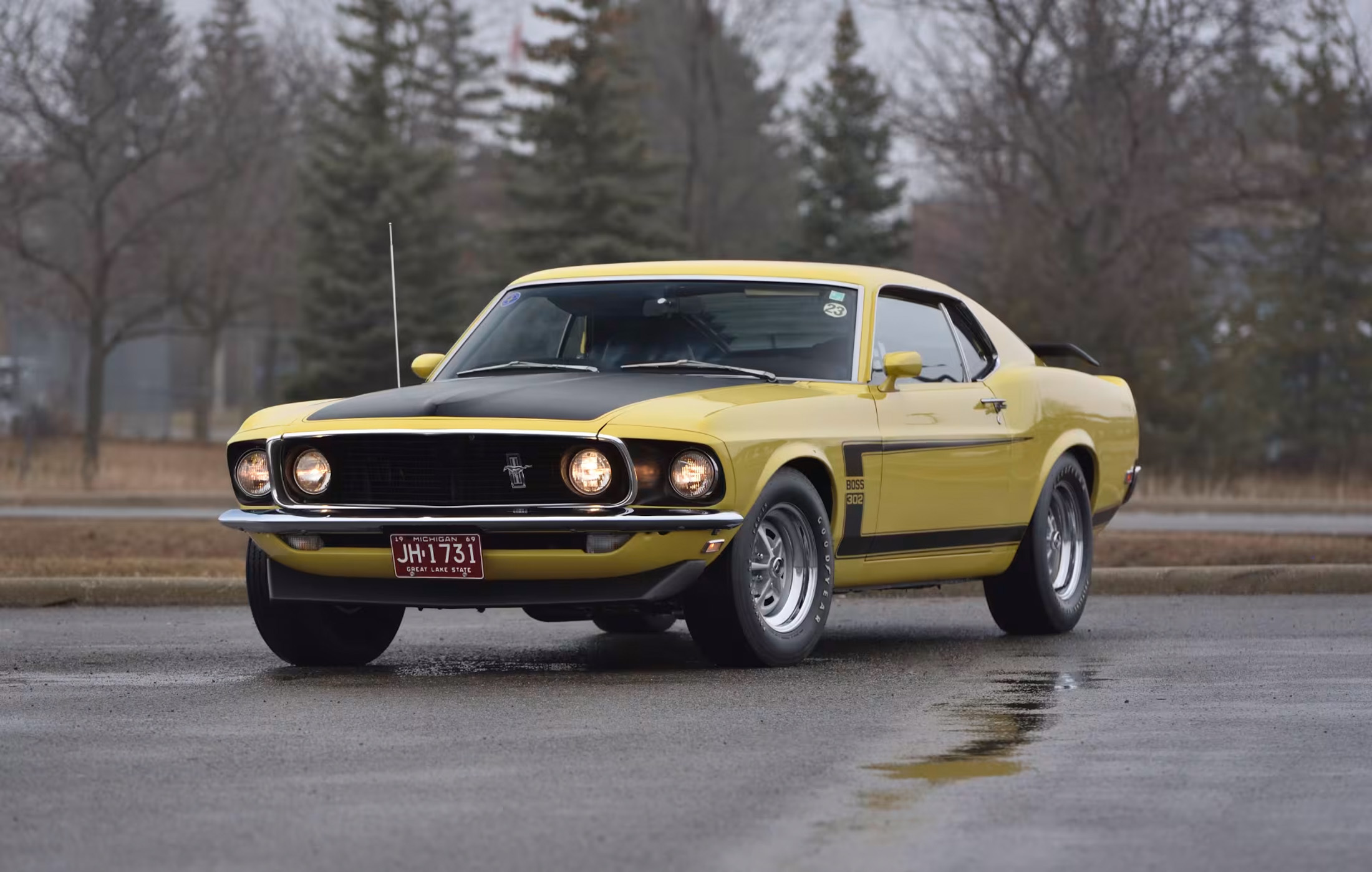Though some car fans flit from brand to brand, many know what they like and stick with it. So a classic Dodge obsessive probably isn’t going to be interested in making room for a Ford Mustang in his garage. But here’s one Mustang with a very unique Chrysler connection that might persuade Dodge and Plymouth fans to go blue.
On the face of it, it’s just a nicely restored 1969 Boss 302, a desirable car, but not much different to many of the other 649 examples born wearing Bright Yellow paint – the Boss’s most popular color – that year.
What makes it more interesting though, and relevant to Dodge lovers, is that this 302 being auctioned by Mecum in May, was bought new by Chrysler in 1969 to help it develop its own rival products, the Dodge Challenger T/A and Plymouth AAR Cuda.
Related: These Small-Cube Muscle Classics Proved You Didn’t Need A Huge Motor To Haul Ass
Ford had won the inaugural Trans Am road race championship in 1966 and again in 1967, but Chevy claimed victory in 1968 with its hardcore Camaro Z/28, whose custom short-stroke V8 was specially designed to fit under the series’ 305 cu-in (5.0 liter) capacity limit. Ford then answered with the Boss 302, another rev-happy small-block pony car that was purpose-built to win on a road course.

Though Chrysler did field a Dodge Dart and Plymouth Barracuda in Trans Am in 1966, it skipped the rest of the decade’s races but planned a big comeback for 1970 with that year’s new Challenger and Barracuda. And to make sure it knew what it was up against, it needed to get its hands on some of the opposition’s hardware.
This 302 was purchased in May 1969 from Ed Schmid Ford in Ferndale, Michigan, and the paperwork clearly states ‘Chrysler Corporation’ meaning there was no attempt made to disguise where the car was going.
Though development on the Dodge and Plymouth Trans am racers and their road car counterparts would have been well underway before the Chrysler guys got their hands on the Boss, being able to drive the Mustang would certainly help them refine certain characteristics of the Challenger and Cuda’s staggered tire setup and the road cars’ triple-carb, six-pack 340 cubic-inch (5.6 liter) V8, which was cut down to 305 cubes for competition.
The Cuda’s excellent 5.8-second zero to 60 mph (97 km/h) time was around a second faster than a Boss 302’s, but unfortunately, the Plymouth and Dodge weren’t fast enough where it counted: they failed to win a single race in 1970, finishing the season last and second-last.
But that was long enough ago to forget about old grudges and this Boss 302’s quirky backstory would make it an interesting addition to a rich Mopar nut’s sprawling collection.
Source: Mecum






















